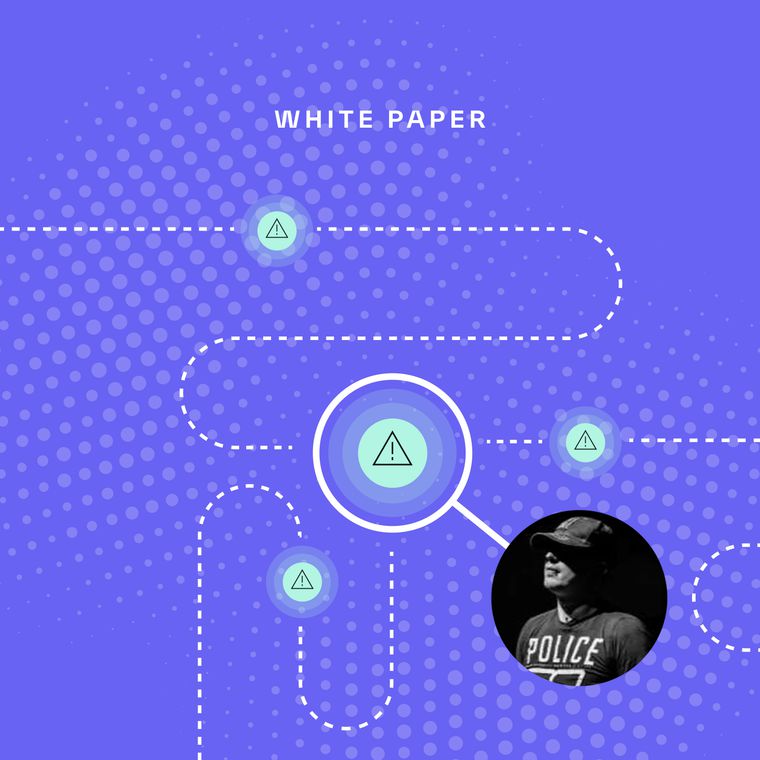Unsupervised learning analyzes unlabeled data autonomously to identify patterns and relationships without predefined outputs. In contrast, supervised learning relies on labeled data to train machine learning models by mapping inputs to known outcomes.
What Is Unsupervised Learning? And How It Works
Unsupervised learning enables AI to identify hidden patterns and anomalies without labeled data, enhancing cybersecurity and threat detection.
Unsupervised learning plays a crucial role in identifying phishing attacks, detecting fraudulent activities, and enhancing threat prevention.
Read on to learn more about what it is, how it works, and how it can strengthen your cybersecurity posture.
What is Unsupervised Learning?
Unsupervised learning is a machine learning approach in which AI models analyze unlabeled data to uncover hidden patterns, group similar data points, and detect anomalies. Unlike supervised learning, which relies on predefined labels, unsupervised learning autonomously identifies structures within data. This technique is particularly valuable for identifying hidden patterns and relationships independently.
Common applications of unsupervised learning include:
Clustering: Grouping similar data points by shared features.
Anomaly Detection: Spotting unusual or suspicious behavior.
Dimensionality Reduction: Simplifying large datasets for better efficiency.
Pattern Recognition: Uncovering hidden data relationships.
Widely used in cybersecurity, it supports fraud detection, behavioral analysis, and uncovering anomalies from complex, unlabeled data.
How Does Unsupervised Learning Work?
Unsupervised learning follows a structured process to analyze data:
Data Ingestion: AI gathers raw, unlabeled data from different sources.
Feature Extraction: The model finds important details that explain how data relates.
Pattern Discovery: AI detects groups, similarities, and unusual data points.
Insights Generation: The system creates insights to improve security or automate decisions.
Continuous Adaptation: Models get better over time by learning from new data patterns.
This approach enables AI to uncover hidden structures and support smarter, automated decision-making.
Types of Unsupervised Learning Models
Unsupervised learning techniques are categorized into:
Clustering Algorithms: AI groups similar data points together (e.g., segmenting network traffic into normal vs. suspicious behavior).
Association Rules: AI identifies relationships between data points (e.g., detecting linked attack patterns in security logs).
Anomaly Detection Models: AI flags outliers that deviate from established patterns (e.g., identifying phishing emails that differ from normal communication behavior).
Applications of Unsupervised Learning
Unsupervised learning powers a variety of use cases:
Cybersecurity: Detecting zero-day attacks, insider threats, and unauthorized access.
Fraud Detection: Identifying suspicious transactions and account takeovers.
Network Security: Monitoring traffic patterns to detect abnormal activities.
News Aggregation: Categorizing related articles from multiple sources for cohesive storytelling.
Computer Vision: Enabling object recognition and visual perception tasks.
Medical Imaging: Supporting image detection, classification, and segmentation for faster diagnosis.
Anomaly Detection: Identifying unusual data points to flag equipment faults, errors, or security breaches.
Recommendation Engines: Analyzing purchase history to drive personalized cross-selling and product suggestions.
In essence, unsupervised learning drives innovation across industries by uncovering hidden patterns, enhancing security, and personalizing user experiences.
Unsupervised Learning in Cybersecurity
Unsupervised learning plays a vital role in cybersecurity by enabling advanced threat detection without relying on labeled data. Here’s how it assists security teams:
Identifying Anomalous Email Activity: Detects phishing emails and business email compromise (BEC) attempts based on deviations from normal behavior.
Detecting Insider Threats: Flags suspicious access patterns that indicate potential internal security risks.
Enhancing Behavioral Analytics: Learns from user actions to distinguish legitimate versus fraudulent activity.
Improving Zero-Day Attack Detection: Recognizes new attack vectors without requiring prior labeled examples.
By uncovering hidden patterns and anomalies, unsupervised learning strengthens defenses against both known and unknown cybersecurity threats.
How Abnormal Uses Unsupervised Learning for Email Security?
Abnormal applies unsupervised learning to detect and prevent sophisticated email threats with:
Behavioral AI Modeling: Continuously learns normal email behavior and flags anomalies in real time.
Context-Aware Threat Detection: Analyzes linguistic patterns and metadata to identify social engineering attempts.
Anomaly-Based Risk Assessment: Detects deviations in email sender behavior, signaling potential account takeovers.
Continuous Model Adaptation: Refines its understanding of new threats without requiring pre-labeled attack data.
Ready to see how Abnormal’s Behavioral AI can stop advanced email threats before they reach your users? Request a personalized demo today and experience autonomous, behavior-based protection in action.


